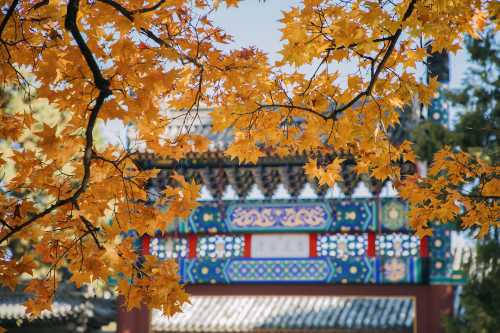App
Customer support
Find bookings
Popular Trip Moments
Cloudy Beijing Vibes🌧️ | 6 Days to Explore Beijing Without Getting Lost After Reading This | Recommending this Japanese-style hot spring villa homestay near Beijing | The ultimate family camping spot near Beijing! Overnight guide for Jinhai Lake Bibo Island with starry skies + lawn | Beijing Autumn Walking Guide: These 6 Hutong Routes Pack All the Romance of Old Beijing Outside the Forbidden City | Core homestay in the Second Ring! Super convenient for travel and food adventures. | Summer Palace Stunning Photo Spot Guide | Beijing Xiangshan Red Leaf Progress 20% | Turn Beijing's fireworks and convenience into everyday life | A Great Weekend Escape from the City | Beijing's Wild Paradise! A Leisurely Stroll Spot | Catch the last bit of autumn and join the Ritan Chrysanthemum Feast | Stay at the Great Wall Private Hot Spring Courtyard and enjoy a fairy-tale autumn day | 2.23 Back from freezing with kids in Beijing and no one told me any of this | Summer Palace Autumn Exclusive! The golden light shining through the cave is breathtaking | Yangtai Mountain Miaofeng Ancient Trail Hiking on Bluestone Path | Escape the autumn chill just 1 hour from Beijing! Stay in a private hot spring villa in Haidian and immerse yourself in the misty Jiangnan rain | #Two-Day Trip Guide to Labagoumen: Accidentally Entered the Land of Oz# This is a niche route perfect for couples or friends to check in together, far away from the city | Beijing Weekend Exhibition Guide: Relive the Golden Age of Animation! Parents, Hurry to Taikang Art Museum | Sub-center Citywalk|Listening to the Voice of Civilization on the Canal | Life advice: You must visit Ulan Butong once in winter | 🏯 Top places for great photos in China | Dongxiaokou Urban Leisure Park Red Leaves Are Already Red | Exploring Nanshiyang: Unlocking the Hidden Canyon Gem | Autumn Splendor at the Summer Palace|The Royal Garden Wonderland is Stunningly Beautiful | Jinhai Lake Bibo Island: The Lake and Mountain Scenery of the Little Switzerland in Beijing Suburbs | The Yellow and Red of Wusi Street | Ancient Pagoda Legacy · Lizard Shadows in Autumn | A Fairy Tale Wonderland Dancing with Deer | Beijing Autumn Limited Fall Foliage Guide: Red Walls Reflecting Yellow Leaves, the Ancient Capital Drunk on Golden Autumn
Recommended Attractions at Popular Destinations
Popular Attractions in Bangkok | Popular Attractions in Kuala Lumpur | Popular Attractions in Dubai | Popular Attractions in Chefchaouene | Popular Attractions in Kyoto | Popular Attractions in Los Angeles | Popular Attractions in Bali | Popular Attractions in Shanghai | Popular Attractions in Iguazu National Park(Argentina) | Popular Attractions in New York | Popular Attractions in Paris | Popular Attractions in Walt Disney World Resort | Popular Attractions in Melbourne | Popular Attractions in London | Popular Attractions in Singapore | Popular Attractions in Beijing | Popular Attractions in Las Vegas | Popular Attractions in Rome | Popular Attractions in Zanzibar Island | Popular Attractions in Sydney | Popular Attractions in West Lake | Popular Attractions in Osaka | Popular Attractions in Tokyo | Popular Attractions in Phuket | Popular Attractions in Barcelona | Popular Attractions in Madrid | Popular Attractions in Chengdu | Popular Attractions in Florence | Popular Attractions in Istanbul | Popular Attractions in Jungfrau Region
Popular Restaurants in Beijing
Made In China | TRB Hutong | Fountain Lounge | Rive Gauche | HUA'S RESTAURANT | Bianyifang Restaurant | BRASSERIE 1893 | ZIJIN MANSION | PeKing HOTPOT | 1949 - Duck de Chine | IL RISTORANTE - NIKO ROMITO | Metrodolitan Restaurant | Aman Summer Palace·Chinese Restaurant | Country Kitchen | DONG LAI SHUN | LA CHANSONNIÈRE | Mansion Cuisine by Jingyan | King's Joy | Xiao Diao Li Tang (Xinao) | Jing Restaurant and Bar | Gastro Esthetics at DaDong | Ciqikou Old Bean Juice Shop (Shop The Temple) | Bai Jia Da Yuan Restaurant | BEI JING MAN FU LOU SHUAN ROU | MAISON FLO | Bai Kui LaoHao Restaurant (Jiao DaoKou) | 清真牛街宝记豆汁店(牛街输入胡同店) | PALACE | The Balcony | THE HOUSE OF RONG
Popular Ranked Lists
Top 50 Must-Visit Restaurants in Zhuhai | Popular Premium Hotels in Altea | Popular Premium Hotels in Yangyang | Top 50 Must-Visit Restaurants in Nha Trang | Top 50 Must-Visit Restaurants in Chongqing | Popular Premium Hotels in Shirdi | Top 50 Must-Visit Restaurants in New York | Top 10 Best Things to Do in Malé | Popular Best Things to Do in Zhongwei | Popular Premium Hotels in Windermere | Popular Premium Hotels in York | Top 10 Luxury Hotels near Bac Giang | Popular Premium Hotels in Whitianga | Popular Premium Hotels in Nakhon Pathom Province | Top 50 Must-Visit Restaurants in Langkawi | Top 10 Best Things to Do in Incheon | Popular Best Things to Do in Yangon | Top 50 Must-Visit Restaurants in San Francisco | Top 50 Must-Visit Restaurants in Washington D.C. | Top 50 Must-Visit Restaurants in Madrid | Top 50 Must-Visit Restaurants in Munich | Popular Premium Hotels in Thu Dau Mot | Popular Premium Hotels in Floriana | Popular Best Things to Do in Lanxi | Popular Best Things to Do in Addis Ababa | Top 20 Luxury Hotels near Binh Son | Top 10 Best Things to Do in Huai'an | Top 20 Best Things to Do in Belgrade | Top 50 Luxury Hotels near Songkhla | Popular Premium Hotels in Arrowtown
About
Payment methods
Our partners
Copyright © 2025 Trip.com Travel Singapore Pte. Ltd. All rights reserved
Site Operator: Trip.com Travel Singapore Pte. Ltd.
Site Operator: Trip.com Travel Singapore Pte. Ltd.





















